Your Cart
The Miracle Child: The Lang Family Story
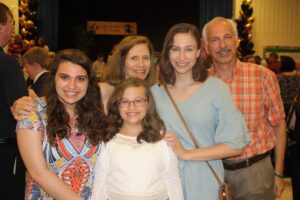 The year 2001 had already been an eventful one for our family. I was a stay at home to two beautiful daughters. My husband Mike and I decided to build a new house and sell the current one. The horrors of September 11th sent shock waves through our country and hit close to home.
The year 2001 had already been an eventful one for our family. I was a stay at home to two beautiful daughters. My husband Mike and I decided to build a new house and sell the current one. The horrors of September 11th sent shock waves through our country and hit close to home.
In early November, we settled into our new home. Five days later, Mike was laid off and our youngest daughter was diagnosed with an eye disorder. We thought, “wow, that’s a lot to deal with;” little did we know the worst was yet to happen.
Three weeks later, my daughters and I were involved in a horrific car accident that left our 3-year-old daughter with a severe Traumatic Brain Injury and fighting for her life. We did not know if she would survive the ride to the hospital or her first night in the intensive care unit. There were so many questions, and the doctors did not have answers.
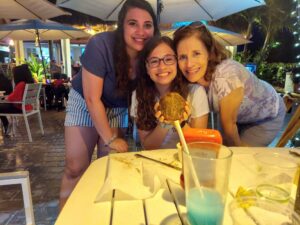
At each turn we had questions but did not receive many answers. The doctors said, “every brain injury is different so we really don’t know what to expect, she may never wake up.” Eventually, she did wake up and after two weeks, she was transferred to an in-patient rehabilitation center where she had to relearn how to walk, talk, eat, and play. The staff told us she was lucky because her injury occurred at such an early age and kids are resilient, however the first 2 years will be the most important for a full recovery.
Once she came home, a month after the accident, our new reality set in. There was the obvious transition to our home life and finding new ways of doing things. Locating therapists to assist in her healing proved to be an arduous task. It was hard enough to find providers experienced in brain injury, but they also needed skill working with the pediatric populations. It was a daunting task.
As we were finally settling into our new routine, I realized something was not right with me. I had trouble comprehending things I read and my fatigue was overwhelming. Not knowing where to turn I went to my primary care doctor who referred me to a neuropsychologist. I discovered that I, too, had a brain injury. I was devastated. How was I going to help my daughter and myself heal?
Olivia received a placement into our school system’s special education program and began attending two mornings a week where she also received speech, physical, and occupational therapy. She now had an opportunity to meet classmates who had been diagnosed with learning disabilities. Young children are accepting of each other. A mother in the class upon hearing our story expressed her empathy to me. She said, “I have had years to accept my son’s disability, but you were thrown an unexpected curve ball. That must be so difficult.” I cried. She was so empathetic to our position. She understood the grief. The positive aspect in my diagnosis is I can sometimes understand Olivia’s frustrations, word finding issues, and difficulty with multi-tasking.
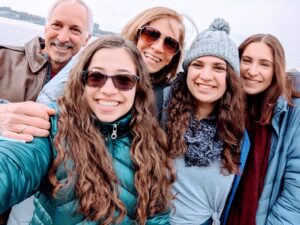 We attended a support group at the hospital for parents of children who had brain injuries. We heard the stories of other families and felt hope. The group gave us resources and directed us to organizations that may be able to assist us along the way. We applied for case management services and Olivia was accepted into the newly developed pediatric program. This led me to join the Brain Injury Service’s Speakers Bureau where I was able to share our family’s story to help others. I spoke to local university students, therapists, attorneys, educators, first responders and others.
We attended a support group at the hospital for parents of children who had brain injuries. We heard the stories of other families and felt hope. The group gave us resources and directed us to organizations that may be able to assist us along the way. We applied for case management services and Olivia was accepted into the newly developed pediatric program. This led me to join the Brain Injury Service’s Speakers Bureau where I was able to share our family’s story to help others. I spoke to local university students, therapists, attorneys, educators, first responders and others.
After hearing our story so many commented how unique our story was and illustrated the strength of family. Some even suggested we write a book.
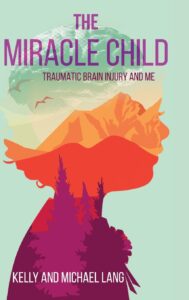 Well, Mike and I agreed. We learned so much over the years about brain injury and advocacy and team building. The process of writing has been cathartic. It showed us how much our family has endured. During the years, we heard comments that he and I approach things differently.
Well, Mike and I agreed. We learned so much over the years about brain injury and advocacy and team building. The process of writing has been cathartic. It showed us how much our family has endured. During the years, we heard comments that he and I approach things differently.
For example, when we attended Individualized Education Plan meetings our differing styles was evident. I usually walked into the meeting with my heart on my sleeve and it was common for me to get emotional. He approached it as a business meeting; he was prepared with a strategic plan to assist Olivia in her educational goals. These approaches worked for us. Through it all we were a team. Our goal has always been to give our children a loving and supportive home.
We decided to use our different points of view in the execution of our book. Each section is our individual perspectives. Our alternating sections detail our perceptions of the events and the feelings they evoked. We hired a developmental editor in 2020 to help organize all the information and give the manuscript structure. There were rewrites as we narrowed it down from 115,000 words to approximately 90,000.
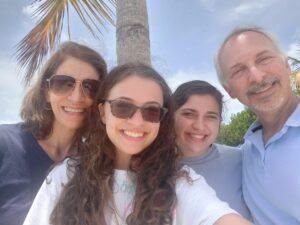
Our goal is to educate others about brain injury but also illustrate brain injury does not only affect one individual. A brain injury is a shocking event no matter the severity. Your whole life is knocked off balance and it takes a long time to regain equilibrium. Our story is one example of how a family rallies together to heal both the individual and the other relationships. It requires us to look at life differently with the knowledge that things can change when we least expect it. I am proud of Olivia and her continued recovery and the strength of our family to support her the best we can. We have had assistance along the way which illustrates it truly does take a village.
This blog post was submitted by BIAV member Kelly Lang. You can purchase her and her husband Michael's new book, The Miracle Child: Traumatic Brain Injury and me on Amazon, Barnes and Noble, and Indie Bound.
Want to support their book?
- Purchase the book and leave a review on Amazon and GoodReads
- Request the book from your local library
- Share the book on your social media pages
The Lang family is graciously donating a portion of proceeds from the book to the Brain Injury Association of Virginia.
